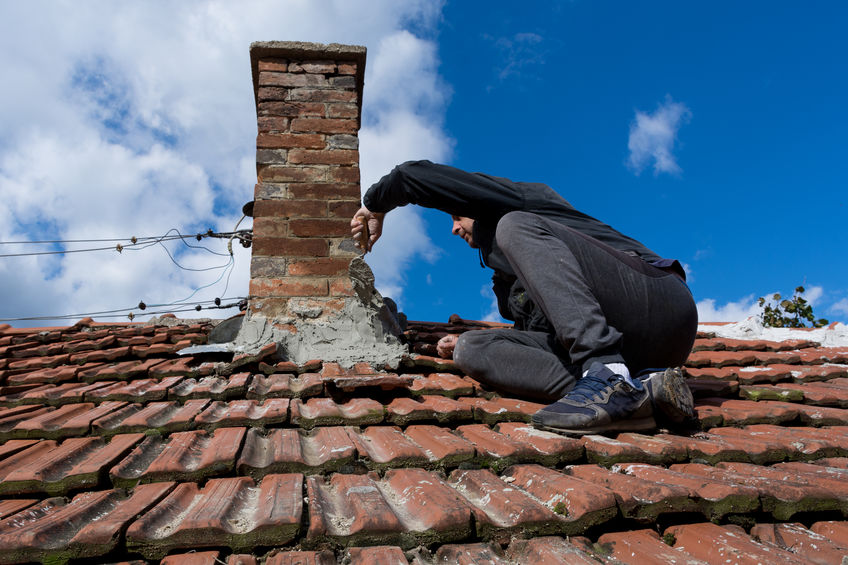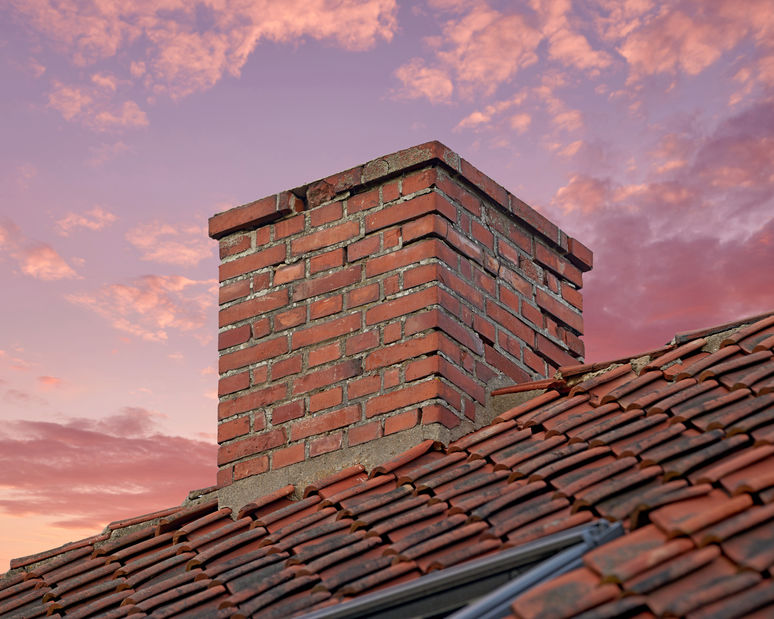It’s a quiet day, and you walk around your neighborhood. As you stroll, you notice a small bird fluttering erratically around a chimney on one of the houses. When you get back to your own home, you see another one zipping around your chimney.
What are these cigar-shaped birds with pointed wings, and why do they seem so interested in chimneys?
What Are Chimney Swifts?
A chimney swift is a small bird native to North America. As its name suggests, it is often found near chimneys, and it’s known for feeding on at least 5,000 insects daily. It has a dark gray-brown color that is slightly paler on the throat, and adults usually grow to be about five inches long with a wingspan of around ten inches.
 The family name of chimney swifts is apodidae, which means “without feet.” Chimney swifts use their curved beaks to catch insects in mid-flight instead of landing on the ground to hunt like most other birds. They eat airborne insects, such as flies, bees, and bugs. And since they spend most of their time in the air, chimney swifts have weak legs and cannot perch like other birds. Instead, they cling to vertical surfaces, such as chimneys, cliffs, and trees, to rest and build nests.
The family name of chimney swifts is apodidae, which means “without feet.” Chimney swifts use their curved beaks to catch insects in mid-flight instead of landing on the ground to hunt like most other birds. They eat airborne insects, such as flies, bees, and bugs. And since they spend most of their time in the air, chimney swifts have weak legs and cannot perch like other birds. Instead, they cling to vertical surfaces, such as chimneys, cliffs, and trees, to rest and build nests.
A chimney swift also performs aerial courtship displays during the breeding season. Two chimney swifts fly closely, with the rear bird following the lead bird. The leader snaps its wings into a V-shape, and the two birds swoop and dive together.
How I Know if There Are Swifts in My Chimney?
Chimney swifts use chimneys as nesting sites because they provide a safe place for the birds to raise their young. The chimney swift’s nest is made of small twigs and leaves that the mother glues with its saliva, and the chicks stay in the nest for about a month before they learn to fly and leave on their own.
Apart from seeing them flying around your chimney, there are other ways to tell if you have chimney swifts in your home. For one, you may hear a loud chirping noise from your chimney. The chimney swift makes a high-pitched twittering sound that is often compared to the sound of a bat. Baby swifts chitter when they are hungry.
Homeowners may also find droppings around the chimney or on the roof. The chimney swift urinates and defecates while in flight, so their droppings are usually found near their roosting sites. Homeowners can expect an unpleasant odor if the birds roost in their chimneys.
Why Can’t I Remove Chimney Swifts?
It can be noisy and smelly if chimney swifts take up residence in your chimney. But before you start looking for ways to get rid of them, you should know that it’s illegal to do so. The Migratory Bird Treaty Act of 1918 protects chimney swifts and other migratory birds from being killed, captured, or sold in the United States.
This law makes it illegal to harm or disturb chimney swifts, as well as their young and their nests. Fortunately, their stays are only temporarily, so you can simply wait it out until they leave on their own.
When Do Chimney Swifts Leave?
Chimney swifts are migratory birds that return to North America every spring to mate and raise their young. They usually arrive in Ohio early to mid-April and stay until late October. In the fall, they migrate south to Central and South America where they remain during colder winter months.
What Should I Do After They Leave?
Chimney swifts are harmless birds just looking for a safe place to roost. That said, having them return to your flue every year can be a nuisance. Here’s what you can do to prevent them from doing so in following years:
1. Schedule a Chimney Inspection
Homeowners should have their chimneys inspected to ensure that they are in good condition and that the chimney swifts have already migrated. Professional chimney sweeps know that they are not allowed to remove chimney swifts or their nests.
An inspection will let you know that the birds are for sure gone, if you can have your chimney swept, and whether or not there are any damages that need to be addressed. Investing in annual inspections helps to prevent chimney fires and other chimney-related problems, as well.
2. Book a Chimney Sweeping
 Chimney sweepings are essential to get rid of any dirt, creosote, or other debris that has accumulated in your chimney.
Chimney sweepings are essential to get rid of any dirt, creosote, or other debris that has accumulated in your chimney.
After chimney swifts have left, it’s likely there will be debris, leaves, twigs, and other nesting materials lodged in your flue – all of which create blockages and fire hazards. Qualified sweeps can employ the proper tools and techniques to safely remove all of this, without damaging your chimney in the process.
3. Have a Chimney Cap Installed
If swifts had easy access to your chimney, chances are your chimney cap is either missing, broken down, or not fitted correctly. Talk with us about having a new one installed that is customized specifically for your chimney. Swifts are notorious for coming back to the same nesting spots year after year, so ensuring they don’t have access next spring is a must.
4. Take an Interest in Chimney Swifts
Interested in doing what you can to ensure swifts stay out of your flue, but still have a safe place to nest? Consider making a chimney swift tower near your home. This ensures these endangered birds still stay safe and protected – just not in your chimney.
We’re Here for You
If you’re in Cincinnati or the surrounding cities, we love to help you keep your chimney and fireplace in the best shape possible. Mid-Valley Chimney Repairs and Sweeps keep homes in the area safer and more comfortable, and we’d love to be your go-to crew for it all.
Schedule an appointment with us today or call 513-727-0994 to get in touch. We’re here and happy to help.



